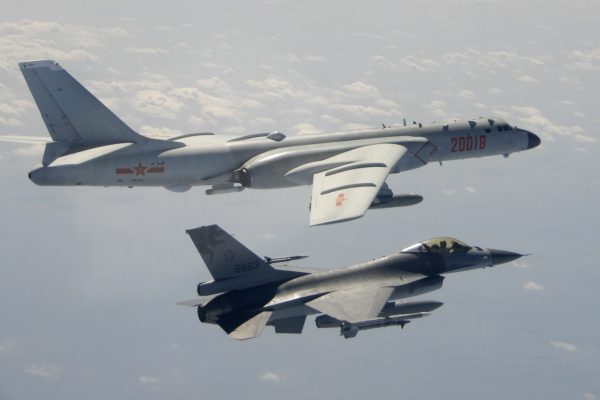
The Diplomat author Mercy Kuo regularly engages subject-matter experts, policy practitioners, and strategic thinkers across the globe for their diverse insights into U.S. Asia policy. This conversation with Dr. Joel Wuthnow ̶ senior research fellow in the Center for the Study of Chinese Military Affairs within the Institute for National Strategic Studies at NDU and lead editor of “Crossing the Strait: China’s Military Prepares for War with Taiwan” (NDU 2022) – is the 336th in “The Trans-Pacific View Insight Series.”
What are the top three takeaways of your book “Crossing the Strait”?
First, we don’t think China has locked itself into an arbitrary timetable to achieve reunification (such as 2027). Any use of force would be predicated more on a judgment that the military, political, and economic conditions are favorable. Those conditions don’t currently support a war of choice for Beijing, but that could change.
Second, the People’s Liberation Army has been working systematically to improve the forces that it would need to use in a war if a decision is made in the future to attack Taiwan. The book goes into great detail about improvements to amphibious and airborne units, logistics and mobilization systems, and command-and-control.
Third, the focus of Taiwan’s defense shouldn’t purely be on military hardware designed to blunt a Chinese invasion. They also need to put more emphasis on personnel and logistics reforms and must balance capabilities to resist an invasion with those more useful in responding to Chinese coercion in peacetime.
Analyze the “U.S. factor” in Beijing’s calculus of initiating a military conflict over Taiwan.
The “U.S. factor” works both ways in China’s calculus. Politically, Beijing sees the United States taking steps that it views as moves towards de facto recognition of Taiwan independence. They don’t view actions such as Speaker of the House Nancy Pelosi’s recent visit to Taiwan in isolation, but as part of a presidentially-sanctioned “salami-slicing” campaign to change the status quo. To reverse those trends, Beijing sees the need to ramp up coercion, which they have done in several ways since early August.
While Chinese leaders are clearly annoyed at U.S. actions and need to respond, they also worry about the consequences of a war. The economic costs of U.S. (and international) sanctions would be huge and imperil Xi Jinping’s larger agenda of national rejuvenation.
The military risks of any war would also be significant and there wouldn’t even be a firm guarantee of success for the People’s Liberation Army if U.S. forces were to intervene (which China’s leaders believe is likely). A military failure would potentially leave Xi in a worse situation politically than he is now. These risks cut against the use of force.
Evaluate the effectiveness of PLA reforms and impact on combat-readiness.
There is no question that China has been improving the hardware it would need to undertake military operations against Taiwan, whether a full-scale invasion or something less, such as a blockade or missile bombardment. They are also fielding systems that reach much farther into the Western Pacific to put U.S. forces at risk.
Reforms conducted by Xi Jinping also improved the underlying systems that make those capabilities work effectively – command-and-control; intelligence, surveillance, and reconnaissance (ISR); logistics; mobilization; and even training and professional military education to build the human capital they need to be able to plan and lead joint operations.
There are some lingering weaknesses, however. The People’s Liberation Army still lacks a viable plan to transport troops and equipment across the strait at the necessary scale. “Joint” training involving multiple services and branches that would have to work together in wartime remains sporadic. And there are continuing human capital problems. These are not insurmountable but will take time to resolve.
What are the strengths and weaknesses in Taiwan’s Overall Defense Concept?
The “Overall Defense Concept” was an attempt to reorient Taiwan’s defense away from high-cost weapons and platforms such as destroyers and tanks and towards asymmetric systems that would likely be more useful in defeating a Chinese invasion. Those include items such as anti-ship missiles and sea mines. This provided an affordable way for Taiwan to meet its most serious challenge.
One problem is that Taiwan still needs modern conventional systems to meet day-to-day responsibilities for national defense. This is especially true as Chinese incursions in the airspace and waters around Taiwan become more frequent. Hardware purchases also have to be balanced against personnel costs – Taiwan faces manpower shortages in key areas.
The deeper issue is that Taiwan has underspent on defense relative to its security challenges. Taiwan has recently spent only about 2.1 percent of GDP on defense; Israel spends more than 5.6 percent. The recent announcement of a 14 percent defense budget increase for 2023 is a good start but more will be needed for Taiwan to meet its goals.
Assess U.S. military capabilities, political will, and public support for U.S. involvement in a possible cross-Strait conflict.
The U.S. military has robust capabilities that it could bring into any conflict over Taiwan but has needed to adapt to the challenges posed by China. Each of the services has updated its doctrine for operating in an “anti-access/area-denial” environment. Numerous wargames have been held to assess how battles might unfold and spark improvements.
Officially, the Biden administration has reaffirmed a policy of “strategic ambiguity” about what it would do in a cross-strait conflict. Some members of Congress and presidential aspirants have advocated abandoning this policy to deter China, though some analysts believe that a shift towards “strategic clarity” would bring all parties closer to a war.
Public support would be a factor in any U.S. decision to intervene. Increasing Chinese coercion has increased U.S. support for defending Taiwan, especially in providing arms and helping Taiwan survive a blockade. Fewer Americans support putting “boots on the ground” but this wouldn’t necessarily be the main form of U.S. assistance in wartime.
How China’s Military Is Preparing for War With Taiwan
Source: Frappler

0 Comments